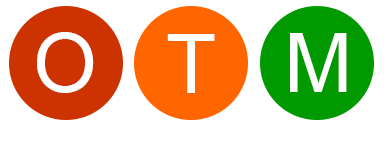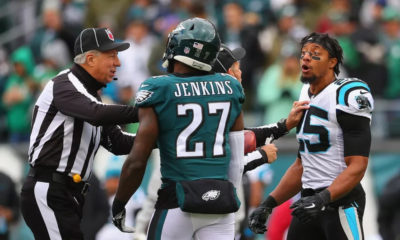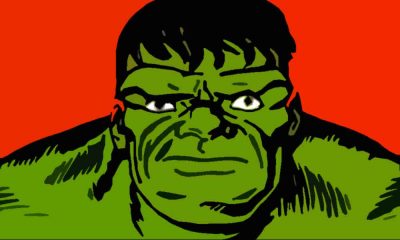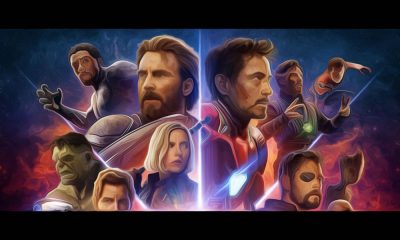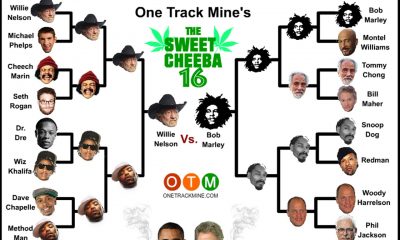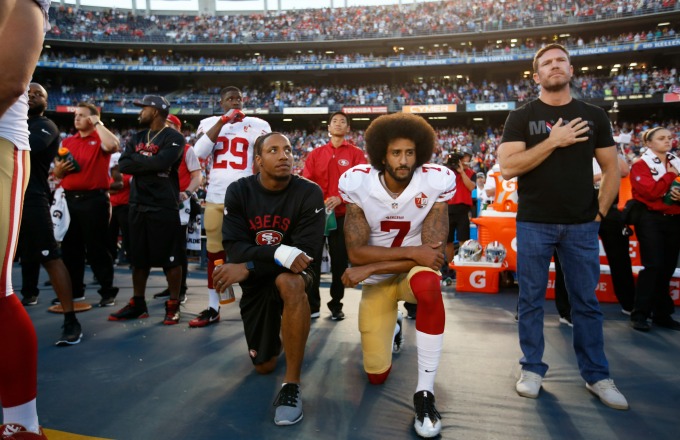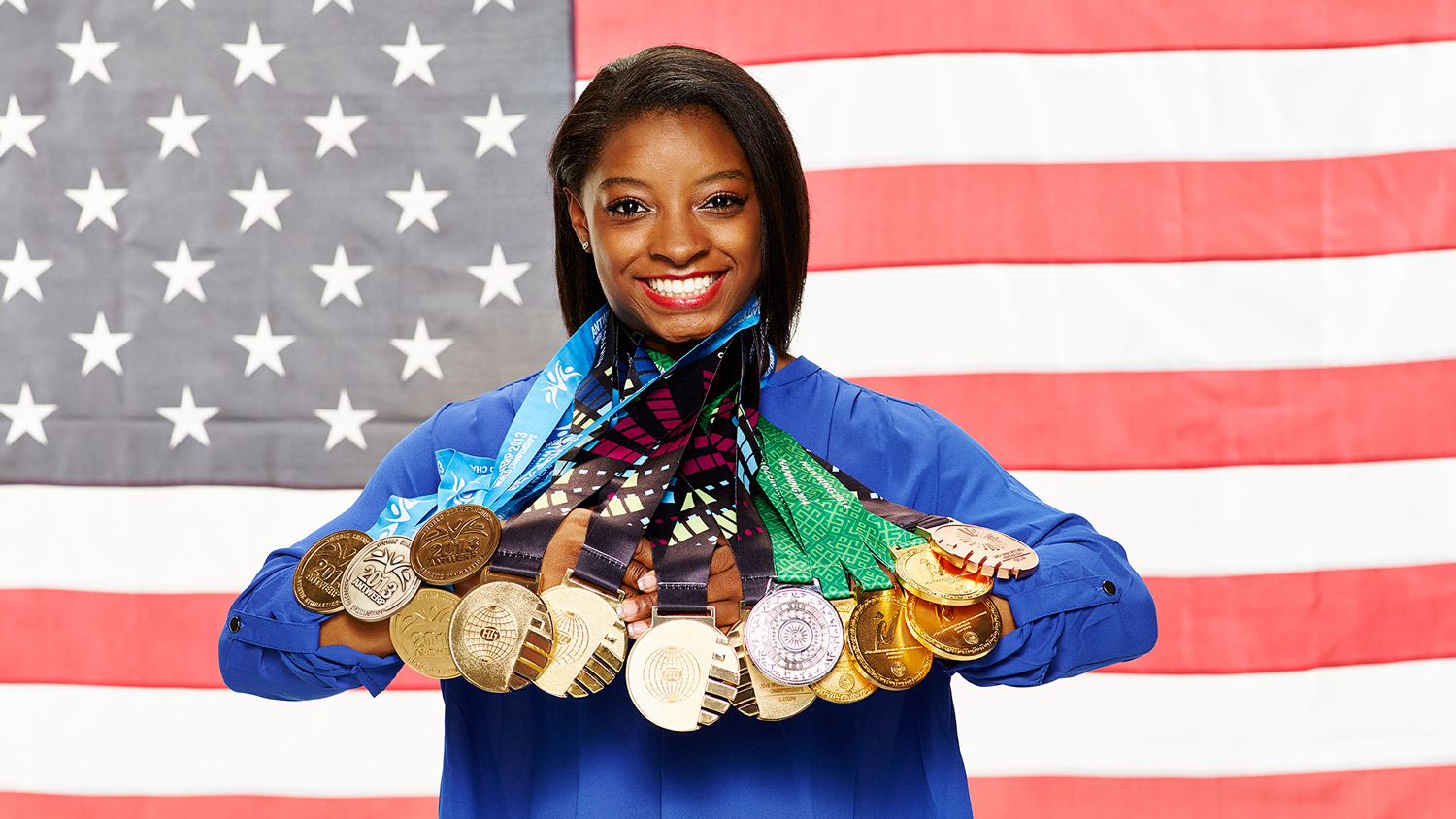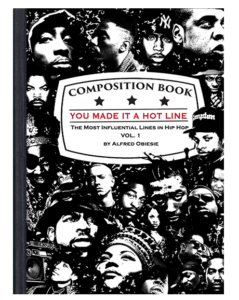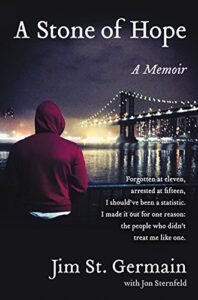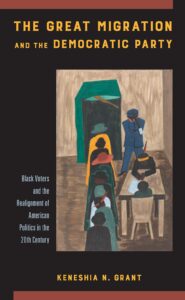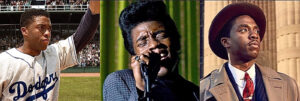Entertainment
The NFL (Nigerian Football League)
Published
11 years agoon
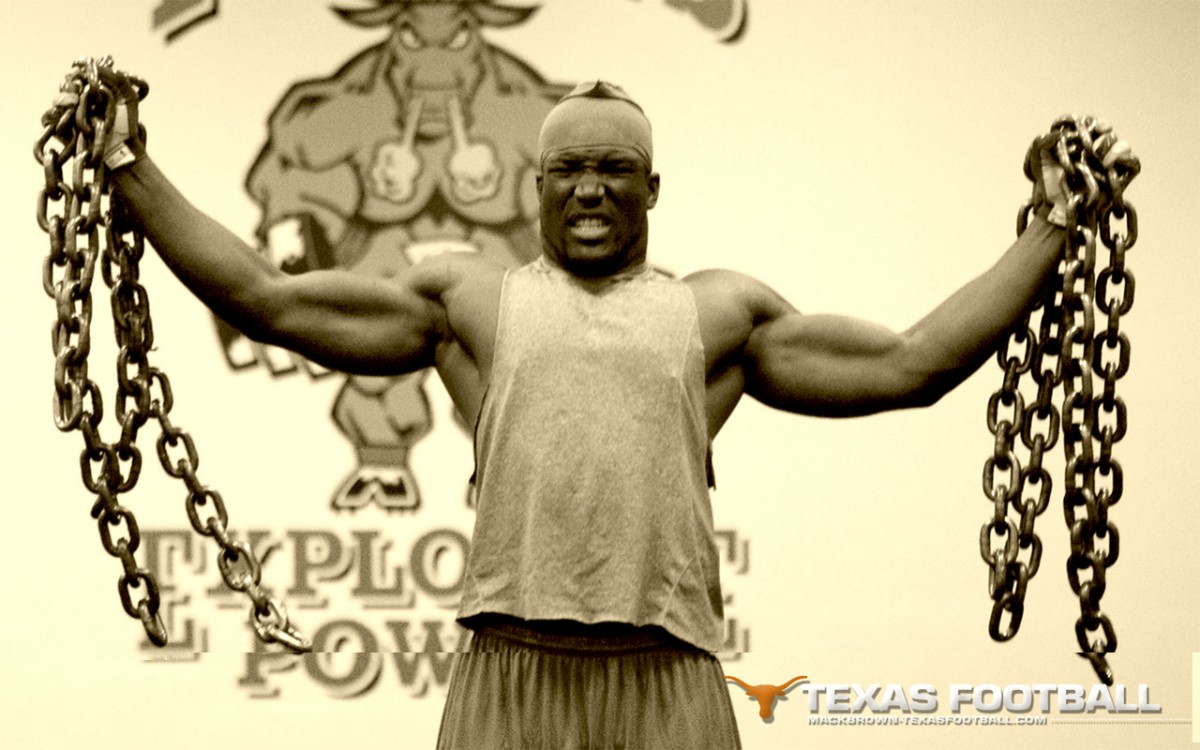
Warning: The following post is narcissistically self-serving and border line delusional. It is however rooted in opinion-based fact. Please apply with one grain of salt.
I recall a few decades ago when an aging CBS sports anchor suggested African Americans may be genetically predisposed to out perform their Caucasian counterparts. Jimmy “The babbling dotard” a.k.a “the Greek” may have been on to something with what appeared to be racially incendiary comments at that point in time. At this juncture in civilization however and keeping in line with the Greek’s assertions, I would like to trump Jimbo with an equally egregious hypothesis; Africans, particularly Nigerians are genetically predisposed to succeed in athletics! The only difference between an African and an African American is literal location (and centuries of psychological rape but I digress). Mike Vick and Michael Jordan could just as easily have been Michael Ovickjukeyou and Michael Ojordunkonyou had their ancestors not made a wrong turn @ Albuquerque. As the old adage goes, “the closer the berry, the stronger the fruit.” But why take my word for it? Allow me to expound on the skill sets necessary to succeed in professional sports and why Nigerians hold the advantage in my thoroughly detailed research findings that I am making up as I go along.
1. Physical attributes – People of the African diaspora have a propensity to grow to rather freakish sizes whilst maintaining the speed and dexterity necessary to navigate through the toughest of offensive lines, wrestling any man or Manning to the ground. Post emancipation, Archie, Eli, and Peyton never stood a chance. It must’ve been a scout’s wet dream to touch down on African soil for the first time and witness Shaq and Serena’s partially naked ancestors harvesting berries in the wild…assuming they had basketball and tennis back then.
2. Intelligence – It is no secret that Nigerians are touted as an intelligible people. From general academia to complex offensive packages, they certainly seem to have a penchant for schemes (offensive, defensive and internet alike). Of course this theory cannot be proven and the underwear bomber certainly throws an elephant sized monkey wrench in my hypothesis but that not withstanding, general consensus (of which I am the General) lends credence to these findings.
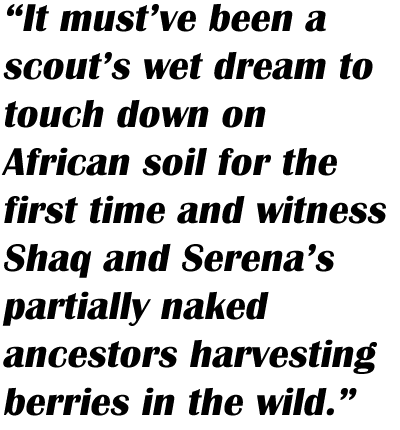 3. Endurance – As we all know, Kenyan’s have the market cornered on endurance. And although Nigerians are not from Kenya, Nigerians are physically closer to Kenya than most Brooklyn residents sans crackheads so by shear illogic and osmosis, Nigerians have more endurance than their East New York counterparts. Yep. And I’m stickin’ to it.
3. Endurance – As we all know, Kenyan’s have the market cornered on endurance. And although Nigerians are not from Kenya, Nigerians are physically closer to Kenya than most Brooklyn residents sans crackheads so by shear illogic and osmosis, Nigerians have more endurance than their East New York counterparts. Yep. And I’m stickin’ to it.
4. Competition – Nigerians are a competitive bunch. No seriously, it’s ridiculous. They believe they are better than every living human being way before ever accomplishing a solitary thing and then they actually set out to acquire the skill sets to back it up. This is why athletics are a natural fit for a people that are fueled by achieving excellence. Not certain where or how it originated but any Nigerian worth their weight in credentials can attest to the competitive nature. Which leads to the next bullet point.
5. Status – Nigerians are a status driven people. No seriously, it’s ridiculous. A certain writer recently discovered that the name of the town his parents hail from, called Onitsha, translated to English means “Arrogance”. Nuff said. Seeing as how excellence breeds accolades, any item or title meant to illuminate them favorably shall be pursued with maniacal focus until acquired. Multiple degrees, professions of prestige, and monetary wealth shall be on full display at all times. It is only fitting then that professional sports, which provides a heightened environment for prestige and wealth is on the radar.
And there you have it. With the underwhelming and irrefutably uncorroborated evidence presented in this here dissertation, is it any wonder why so many Nigerians are populating professional sports? In all seriousness (and at the risk of sounding like Hitler), there are certain professions that necessitate specific physical characteristics and it is safe to surmise that if you required individuals of a certain stature, you would be inclined to search in the areas they most densely populate. Concurrently, if you were born with three hands, you should probably forego a career in kickboxing and try your hands at wide receiver. Let that be a message to all the parents hell bent on limiting their 6’5″, 300 pound sons to academia specific professions. The Samoan Islands can’t be too far behind with unbalanced #’s in the NFL because quite frankly, they grow them boys big and fast down there too.
So why am I not in the NBA or NFL you ask? Because I’m 5’11″ on a good day and although I love basketball, my ability to use my right hand has historically been referred to as “suspect” but more importantly, that is not where my passion lies, for if it were, the fact that I am a proud Nigerian man allows me to convince myself “I could’a been a contender” in any professional sport. Of course it’s delusional but that is the Nigerian way. We believe we can do anything and are conditioned to make the attempt. The only difference between faith and delusion is one’s level of success so we could probably all use a little more delusion.
The Nigerian Football League (NFL) Past & Present
1. Nnamdi Asomugha
2. Osi Umenyiora
3. Adewole Ogunyele
4. Israel Idonijie
5. Prince Amukamara
6. Chinedum Ndukwe
8. Trevor Mbakwe
9. Amobi Akoye
10. Brian Orakpo
11. Christian Okoye
12. Frank Okam
13. Xavier Adibi
14. Amobi Okoye
15. Eric Ogbogu
16. Akinola “Akin” Ayodele
17. Russel Okung – Seattle Seahawks
18.. …..And a whole bunch more but you get the point.
The Nigerian Basketball League (NBA) Past & Present
1. Mike Olowakandi
2. Emeka Okafor
3. Andre Igudala
4. Hakeem Olajuwan
5. Yinka Dare
6. Solomon Alabi
7. John Ameche
8. Al-Farouq Aminu
9. Ekpe Udoh
10. Gani Lawal
11. Steve Nash (He was actually born in South Africa but once again, close enough…plus you always need at least one token white guy on your team).
Regards,
Alfred “Show ‘em your “O” face” Obiesie
You may like
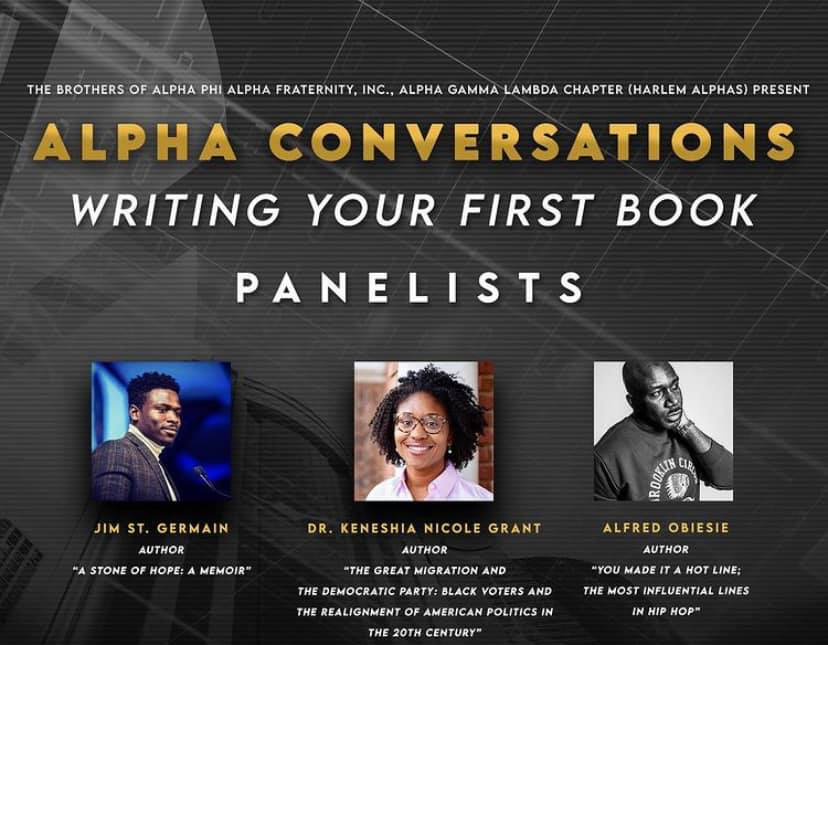
I had the distinct pleasure of participating in a panel discussion on writing your first book, presented by the Harlem chapter of Alpha Phi Alpha Fraternity Inc. Alongside Jim St. Germain, Author – A Stone of Hope: A Memoir and Dr. Keneshia Nicole Grant, Author – The Great Migration and the Democratic Party: Black Voters and the Realignment of American Politics in the 20th Century. We opined on pain points, benefits and strategies regarding our inaugural voyages into authorship. Feel free to watch for your self and I hope this provides some insight to all those looking to make the same voyage. Enjoy!
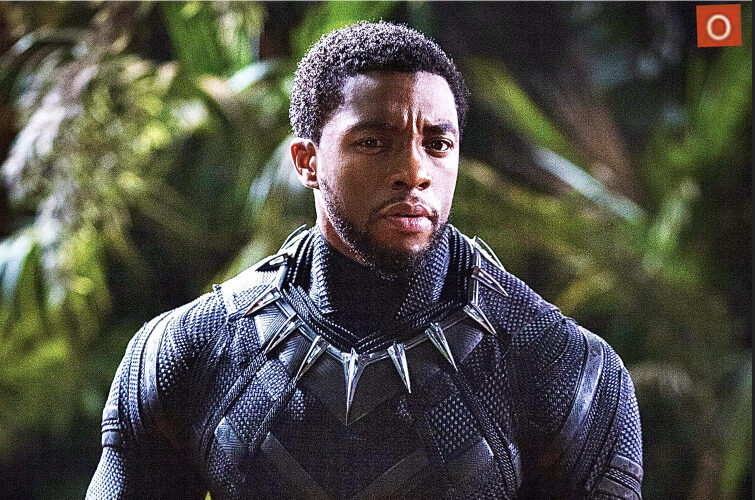
It is clear that Chadwick Boseman chose iconic roles like Thurgood Marshall, James Brown, Jackie Robinson and Black Panther with deliberate intent and for a specific purpose. In an age where positive roles for Black actors is often sparse, Chadwick managed to land and portray historical figures that made most respect his talents if not revel in his ability to transition effortlessly for one character to another. Even I had to give his African accent a solid B+ (It’s the highest grade the Nigerian Standards Bureau can give for an African accent to a non African FYI.)
Holding out and preparing for these dynamic roles came with both great frustration and incredible resolve I’m certain. Not to mention the taxing ordeal of battling Colon Cancer as the grueling scheduling of filming and increasing responsibility for positive representation loomed. Even under extreme duress, Chadwick’s commitment to others appeared to outweigh his own tribulations, unbeknownst to us all.
Black Panther may have been just a movie to some and that may be because some can easily rattle off 10 movies with a king of non Af-Am origin. It represented a lot more to others. Albeit imagined, imagery on cinema often accomplishes more to augment the social narrative and society itself than actual reality. If negative stereotypes influence perception then positive ones absolutely have the same converse effect.
Even in jest, the cultural misappropriation of raisins in potato salad on SNL skits directly spoke to the tampering of black culture to which T’challa championed, represented and aptly responded “Oh hell Nah Karen!”
If you don’t understand the relevance of representation, it’s probably because you are thoroughly represented. After all, no one is ever grateful for every breath they take until they are gasping for air.
R.I.P Chadwick Boseman. Thank you for breathing life into the possibility of Black excellence.
Article
10 Easter Eggs of Segregation in Lovecraft Country Episode 1
Published
5 years agoon
August 19, 2020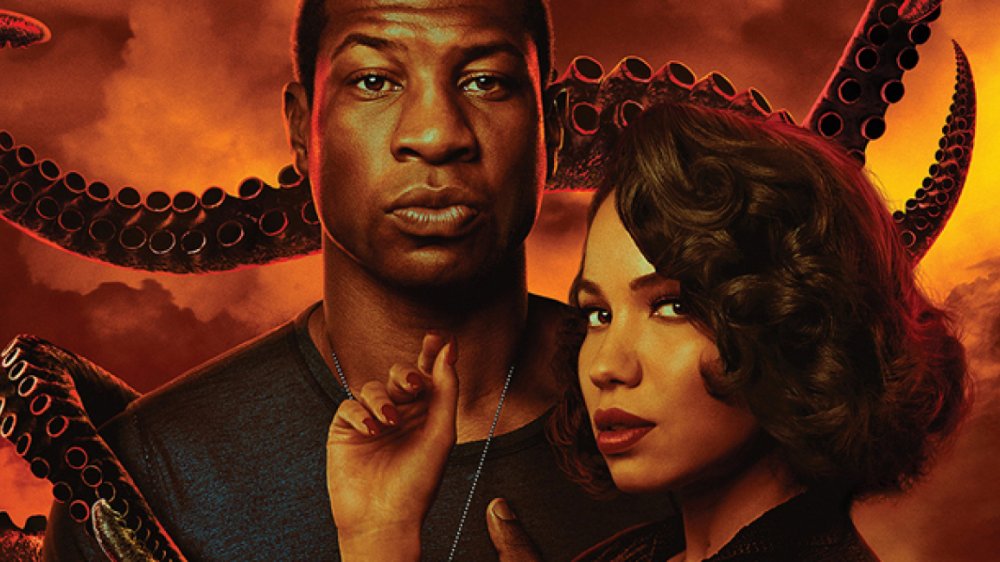
We’re all familiar with movies hiding easter eggs throughout their films sending winks and nods to pop-culture references. Sometimes it will be a tip-of-the-cap to an author, actor, or creator. Sometimes it is paying homage to an inspiring series, book, or film that’s near and dear to the director’s heart. This week I’ve seen a first. A T.V. series that has several easter eggs depicting segregation and oppression that only eagle-eyed aficionado’s of the black struggle might have caught on to.
Lovecraft Country is littered with important details that would fly over many people’s heads, and as I watched it again, I caught more nods to the true oppression of many African-Americans during the post-World War II era.
As a film buff, nothing makes me happier than watching a review, breakdown, or hidden easter egg video on a TV show I enjoy. Yesterday I did the same with Lovecraft Country, and while many of the melanin-deficient reviewers on youtube touched on the themes of literature, horror, and fantasy, many understandably missed some of the most important historical references.
Here are 10 Easter Eggs of Segregation in Lovecraft Country Episode 1.
1. H.P. Lovecraft’s little poem.
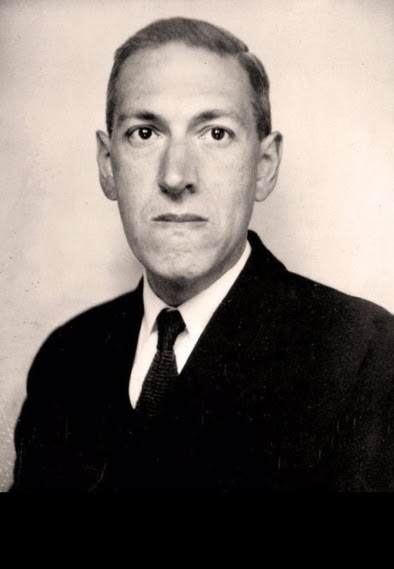
While we all know H.P. Lovecraft as an innovator of modern horror, fiction, and fantasy in literature, many people (including myself) didn’t know about a poem he wrote that spoke horribly about African Americans. Lovecraft Country alludes to the poem, but never recites it. Once they mentioned the title, I went straight to my Google Search. Below is the poem called: On the Creation of N*****s (1912)
When, long ago, the gods created Earth
In Jove’s fair image Man was shaped at birth.
The beasts for lesser parts were next designed;
Yet were they too remote from humankind.
To fill the gap, and join the rest to Man,
Th’Olympian host conceived a clever plan.
A beast they wrought, in semi-human figure,
Filled it with vice, and called the thing a N****r.
I’m sure Jackie Robinson beating the S**T out of Cthulhu at the beginning of the episode was a collective middle finger from the black community to Mr. Lovecraft.
2. Seating for Black People
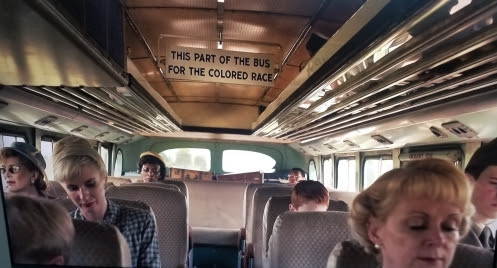
Scene from episode 1
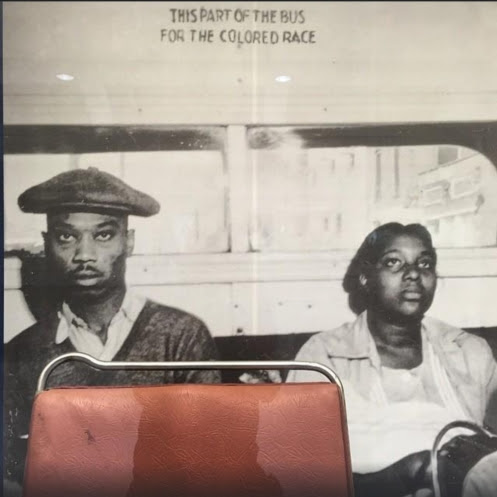
Actual photo of a segregated bus
While this may not come as a surprise to many of you, a lot of people are ignorant to the fact that, yes, black people were made to sit in the back of the bus. Many know the story of Rosa Parks’ defining moment, but for decades this was the way of life for black people. Where insult to injury is predicated in the show is when the bus breaks down and the bus driver gets a local pick-up truck driver to ride the stranded passengers into the city. Immediately in the next scene, the only two black passengers were seen walking down the road into Chicago.
3. Propaganda for the Negro Soldier
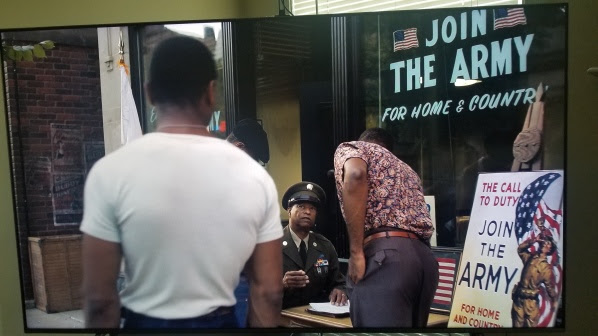

In Lovecraft Country, the above poster is not shown in this episode, but instead, it’s a black soldier telling other young black men that if they enlist, they can see the world. While Atticus walks by the soldier, there’s a glance of recognition as if Atticus was once one of those impressionable young men, and he knows their being lied to. Black men had to be enticed to enlist by different methods than whites because it was hard to show patriotism to a country that still to that day had kept them oppressed. So, they would show a poster of Joe Louis joining the fight…why don’t you? Get to see the world! Little did they know seeing the world would involve PTSD, death, and despair.
4. The Negro Motorist Greenbook
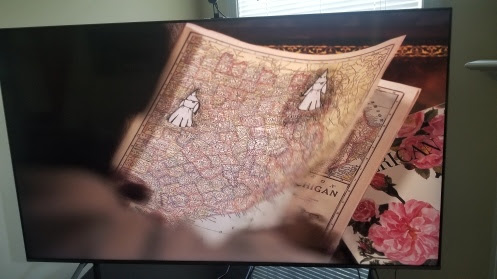
Scene from episode 1 depiction of the Green-Book
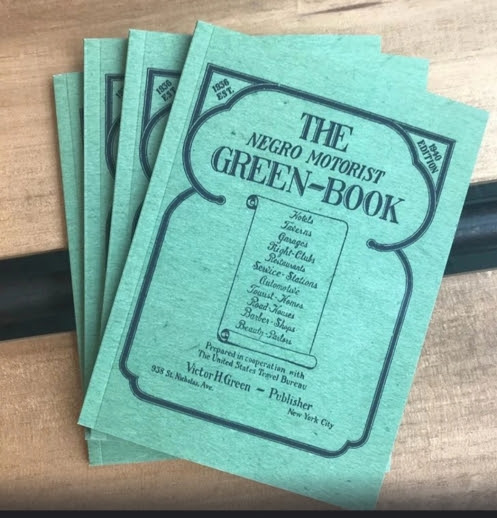
Actual Green-Book
The synopsis according to IMDB.com is: “Lovecraft Country follows Atticus Black as he joins up with his friend Letitia and his Uncle George to embark on a road trip across 1950s Jim Crow America in search of his missing father.” While this is true, it’s not the whole story. Why are they embarking on this trip? It’s to help update what many people may know as, The Negro Motorist Greenbook. Yup, just like the movie, The Greenbook. If you don’t know, this book was originated by Victor Hugo Green as a travel bible for African Americans. It provided details of safe roads to travel, places for food, repairs, and lodging where they wouldn’t be turned away or even worse, assaulted.
5. James Baldwin’s monologue on racial divide

During one of the scenes in Lovecraft Country, we see a montage of our protagonist’s road trip. In the montage we see different moments where they face discrimination, others facing discrimination, and the hardships of ignorant people with all the privilege in the world monopolizing on their entitlements. Usually, during movie montages, a composer would play a score to envoke emotions during the collection of scenes. Lovecraft Country went in a different direction. Instead, they played the monologue of James Baldwin’s renowned speech at Cambridge University where he debated with William Buckley on the subject of the United States racial divide. James Baldwin was a brilliant playwright, novelist, speaker, and activist that eloquently described the plight of the black man as it still stands today. Merged with the scenes during the montage, it speaks volumes about the state of America.
6. Ice Cream stand Scene
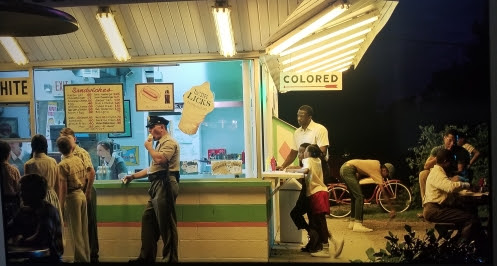
Scene from episode 1
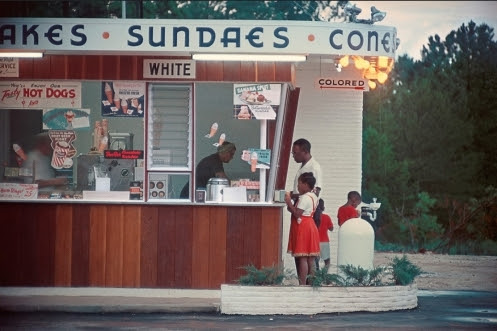
Gordon Sparks photograph
In one of the scenes in the montage, we see a black man and his children waiting at an ice cream stand for service. Right over them is a sign that says “colored” and on the other side of the stand is a group of white people with ice cream being tended to by the servers. This scene looked extremely familiar to me. When I did some research, I realized this scene was based on a famous photograph by Gordon Parks, photographer and journalist who well-documented scenes of the segregation and civil rights era. Years ago I saw his work in its full brilliant quality at the High Museum in Atlanta. The color and detail brought a realism that a black-and-white photo could never do. It made this a real thing.
7. Mother and daughter under the neon sign
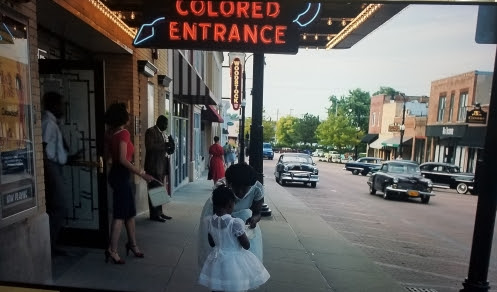
Scene from episode 1
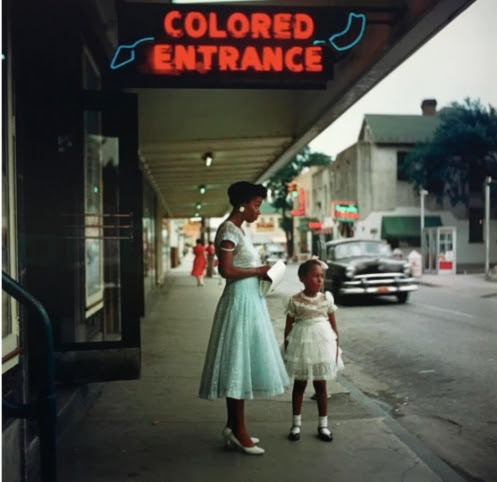
Actual photo
This scene once again pays homage to another photograph by Gordon Parks. A mother and her daughter dressed elegantly as if they were going to church, standing under a large neon sign that says ‘Colored Entrance’.
8. The billboard across from the gas station

Scene from episode 1
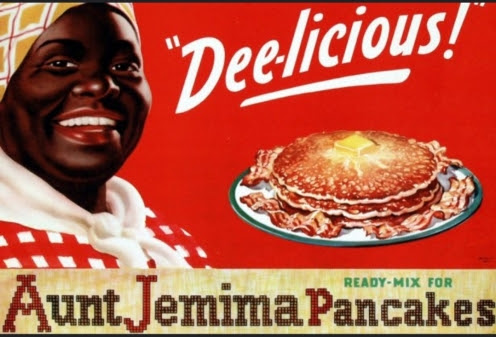
Advertisement the billboard is based on
While Atticus and company are at a gas station filling up their car, they are approached by a gas station attendant pretending to be a gorilla to mock them. Leticia holds Atticus back from approaching the man as the attendant intensifies his ignorant behavior and she forces Atticus into the car. As they pull off, you can see a Billboard for Aunt Jemima in the background. Aunt Jemima has always been a misrepresentation of black culture through the lens of the white man and advertised to his fellow man as the overall perception of black people. The image of Aunt Jemima is a source reflection of the learned behavior of the gas station attendant.
9. Sundown towns
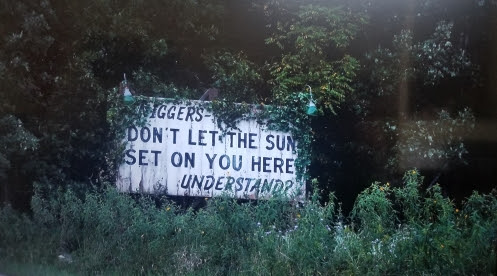
Scene from episode 1
Two years ago was the first time I’ve ever heard of a Sundown Town. No, not through a history book, but as a warning about staying too late in a little town in Texas that exists today! If I didn’t hear about this first hand, I would’ve thought it was a theme of the past, but no. There are currently county’s that do not condemn the abuse of black people once the sun goes down! While the billboard here might be a relic from the past, Sundown Towns are definitely alive and well across America!
10. White walls
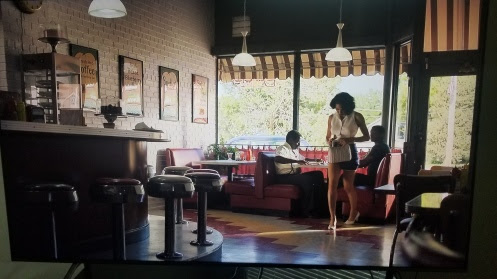
Scene from episode 1
Not only is this one telling, but it also holds all kinds of subliminal messages. While the group finds a Green book safe haven for dining called Lydia’s, they are surprised to find the restaurant is now called, Simmonsville Dinette. Still, they walk in and are greeted by unwelcoming faces. While the server goes to the back for what seems like their coffee orders, Atticus realizes that the walls are painted white. He asks his uncle to remind him why the white house was white. His uncle tells him about the war of 1812 when British soldiers torched it and when slaves were tasked to rebuild it, they had to paint it white to cover up the burn marks. This tells us two things. Lydia’s restaurant was burnt down and rebuilt by trespassers (obviously for being a safe haven for blacks in this all-white town) and the blackness of this restaurant was erased and covered up by the ‘white’ paint. My goodness, I could go on and on about this one!
I was expecting this series to be littered with easter eggs, but knowing they have incorporated easter eggs specifically about the black movement and struggles has me fired up to see what else is in store for these characters. Did you see any easter eggs that I missed? Comment and let me know.

